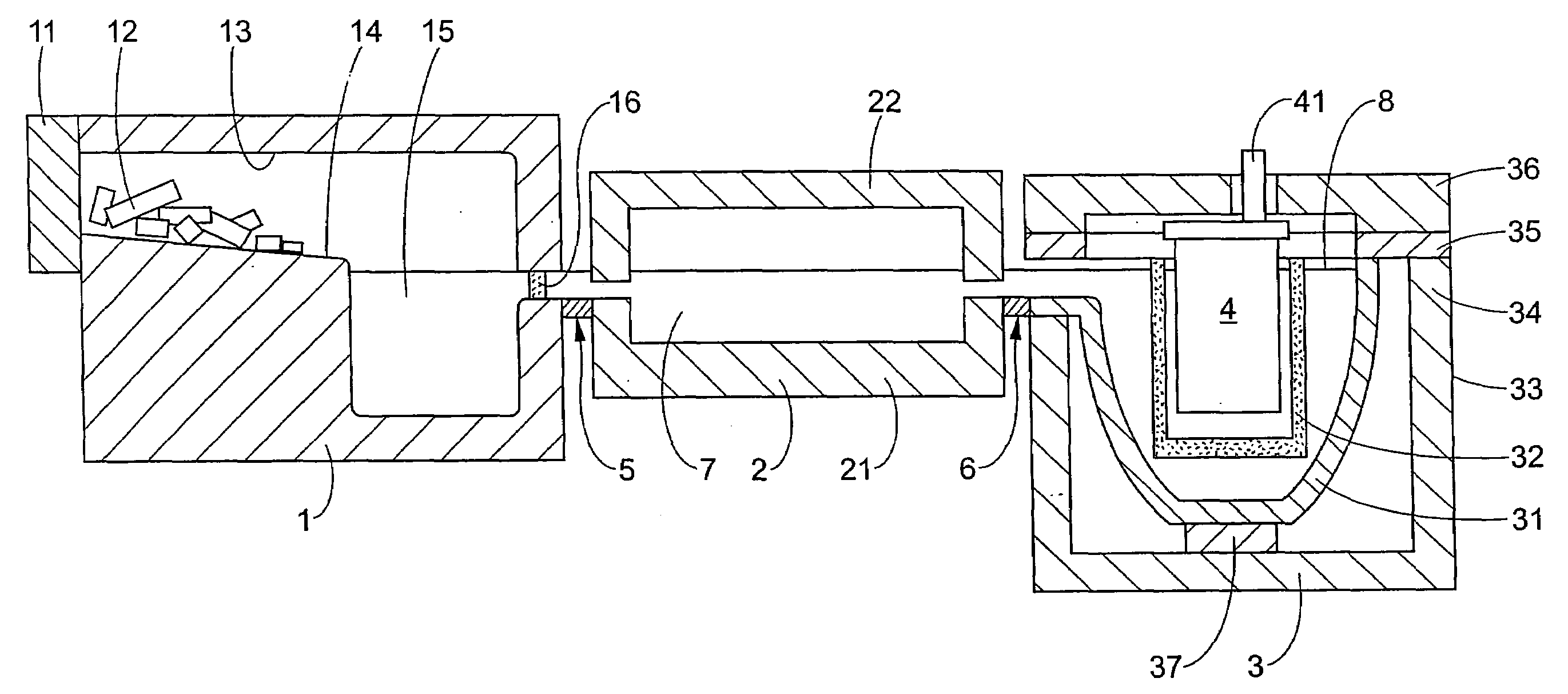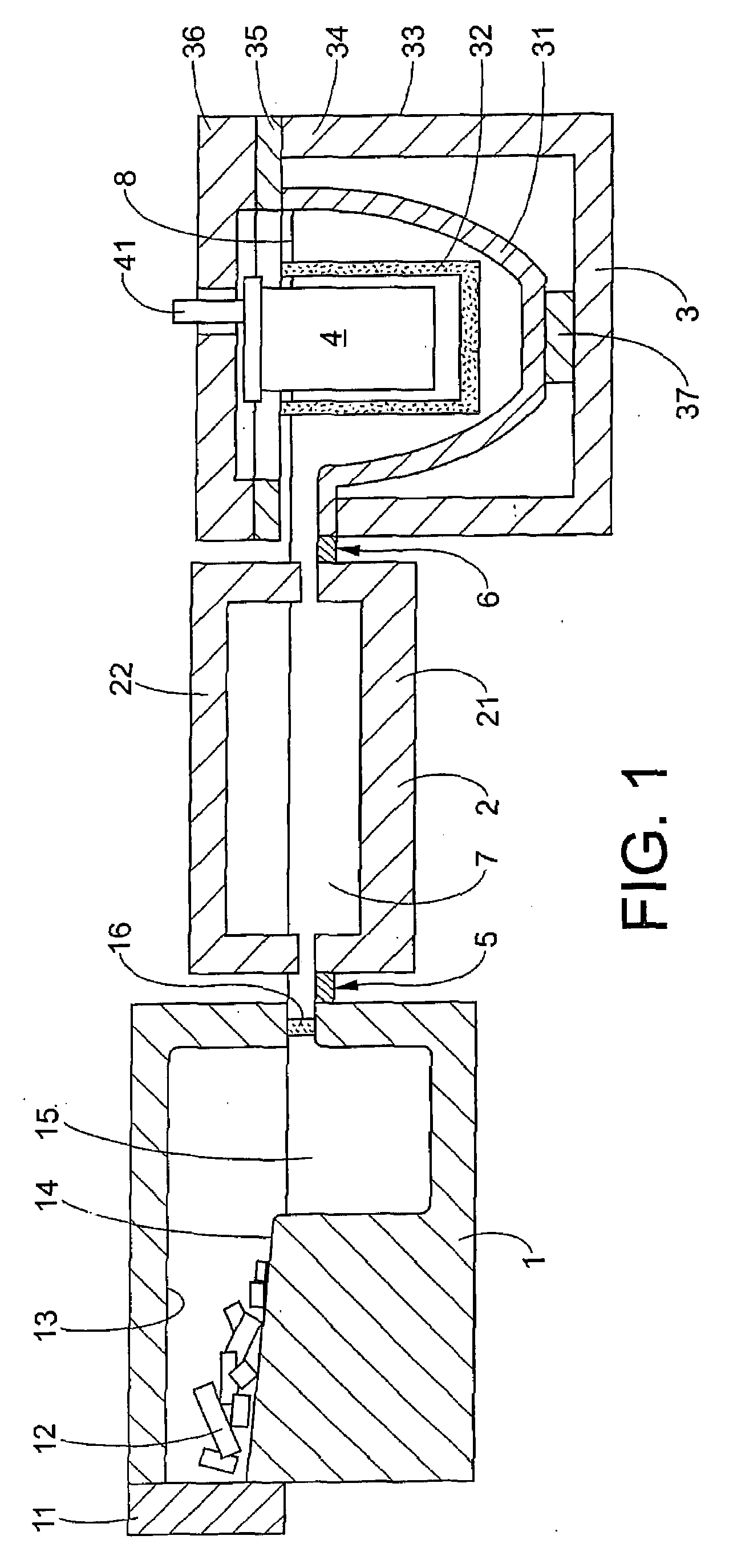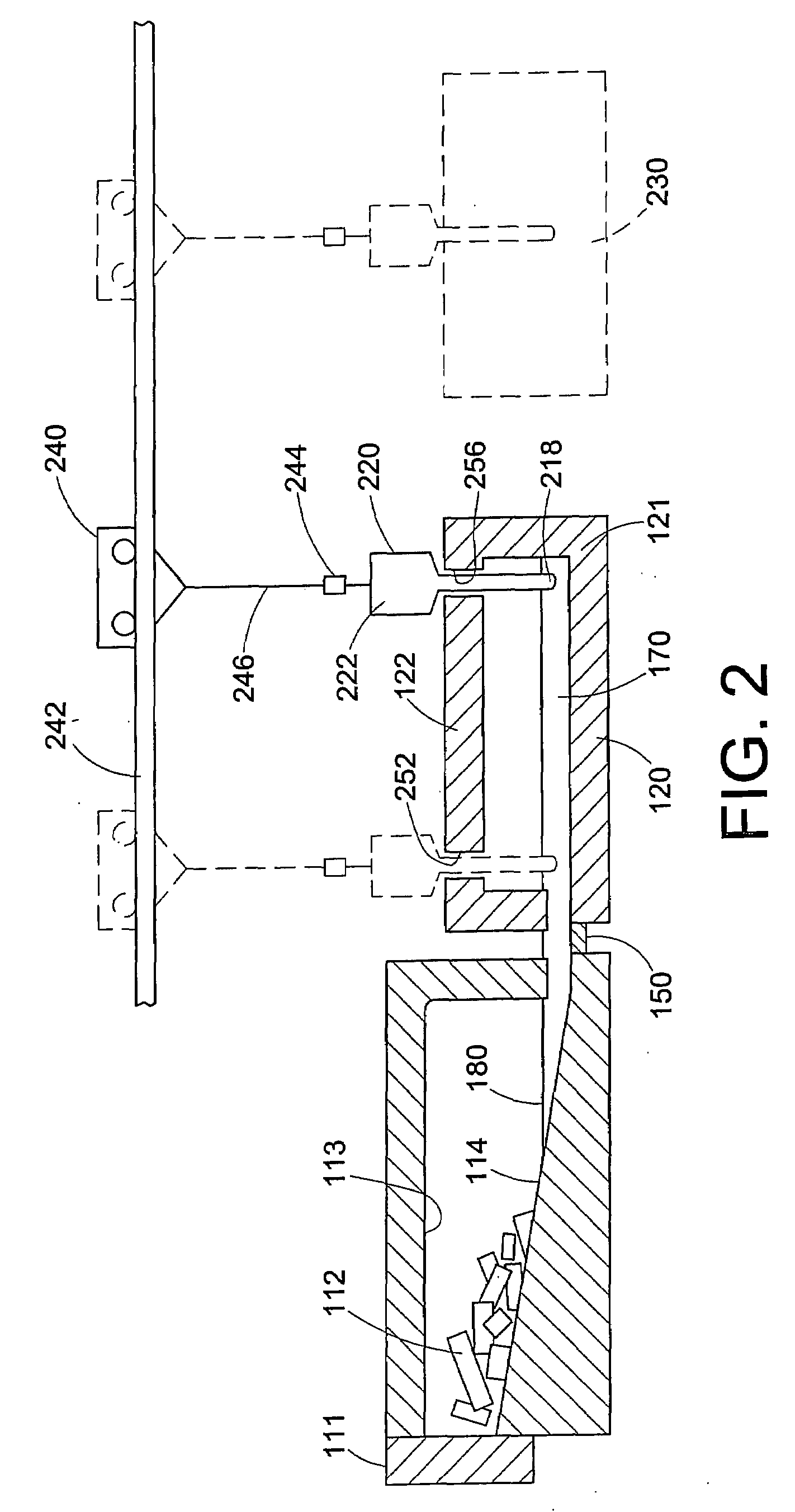Conventional methods of transferring and casting liquid metals by pouring effectively in
free fall under gravity practically always introduce defects into the liquid because of the turbulent folding over of the liquid surface.
These folded films possess no bonding between the opposed
oxide surfaces, and so act as cracks in the liquid.
The freezing-in of the doubled-over films (known as ‘bifilms’) into castings results in poor and erratic mechanical properties and low
fatigue resistance of the cast component.
Once introduced, bifilms are not easily eliminated from liquid metals, particularly
oxide bifilms in liquid aluminum and its alloys.
Later, in the casting, it can unravel, becoming a serious crack-like defect that reduces the properties of the casting.
Thus any slight
convection in the melt will cause the suspended oxide defects to circulate for hours or days.
However, the quest for totally quiescent melting, and totally quiescent transfers to effect casting, has not been easy, and has thus far been elusive.
Unfortunately, however, this technique also re-introduces millions of minute
double oxide films because the
inert gas cannot be truly
inert; it will always contain sufficient contaminating gases to create a
thin oxide layer on the surface of every bubble.
Even worse, it is not uncommon for rotary degassers to operate in such a way that a vortex is formed around the rotor shaft which carries air down into the melt, re-introducing oxides as fast as they can be removed.
In addition to these problems, if the rotor
assembly is not completely dry (the refractories are likely to have absorbed up to ten per cent
water vapor over a weekend for instance) the first several minutes of operation of the rotary
degasser will cause an increase in the gas content of the melt.
Thus the melt will get worse before it gets better.
These are not easily controlled because of their large volume of compressible gas, and large amount of heavy liquid that needs to be accelerated into the mold cavity.
Even more seriously, such units have to be filled with
liquid metal, and the filling is usually carried out by pouring under gravity, often from a considerable height, thus introducing the very defects that the process seeks to avoid.
In this case, the holding furnace is of such a shape, with its large depth, that the cooler walls encourage downward flow of cooler
metal, setting up a convective stirring regime that prevents the efficient
settling of inclusions in suspension.
The existing electro-magnetic pumps are also somewhat counter-productive because of the huge power dissipation in the working volume of the pumps, resulting in very high redundant forces which cause intense
high velocity stirring; only a minute fraction of the electrical power is used in the useful propulsion and pressurization of the metal.
The use of electromagnetic pumps is considered less than ideal because of the problems cited above.
The different levels of the melt in the various sections is again counter-productive because it is not easily achieved without the action of powerful forces, and the probable consequential eventual fall under gravity at some later stage.
The proposed heating by arcs will also, of course, create Lorentz forces in the liquid, causing localized intense stirring, again to the severe detriment of the melt as envisioned herein.
This is a highly damaging action, creating and entraining much
dross (i.e. macroscopic oxide defects in addition to copious amounts of microscopic oxide bifilms).
Whilst filling a dispensing chamber, a stopper then allows the melt to fall a second time, thus further causing degradation of the quality of the melt.
Finally, the melt is dosed by gravity into the mold, again damaging the melt.
However, in addition, degassing by bubbles is disadvantageously introduced, together with a
plunger displacement mechanism that transfers the melt out of the final vessel in some unspecified manner.
U.S. Pat. No. 4,974,817 describes a holding vessel of unspecified geometry as usual, but heated by
gas burner, and so both disturbing the surface and providing products of
combustion so that the
hydrogen content of the melt is not easily reduced.
U.S. Pat. No. 5,662,859 is a complicated
system involving the use of many
moving parts, all of which are known to introduce severe practical problems for the reliable operation of systems for the handling of molten Al and its alloys.
Similar oxide creation on the walls of the containment vessel will damage the melt when the unit is used in the gas-pressurized
delivery mode.
The movement of the whole unit on rails to effect contact with the casting
machine is also seen to be disadvantageous because of the danger of slopping and surging of the melt, again raising
sediment, and creating oxide wash on the internal walls of the various chambers.
As such, it has the standard drawbacks of large, expensive
pressure vessel, and large volumes of air or
nitrogen gas to pressurize the melt to effect casting.
The valve immersed in the melt is a source of concern regarding its reliability in production.
Also, the filtering
system comprising the deep
bed effectively prevents any rapid change of
alloy, and is a major task when the
bed requires to be changed.
This washing of melt up and down the delivery tube will generate oxides at the very point where they are most in danger of entering the mold and thus degrading the casting.
(i) In summary, there are many disturbances that affect the operation of a conventional holding furnace.
 Login to View More
Login to View More 


